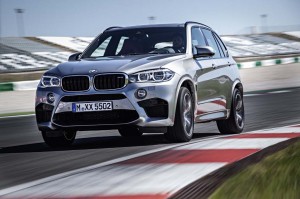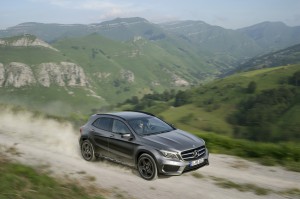Improvements in consumer sentiment, low interest rates and the steady growth in the sales of truck and utility vehicles, including those sold by luxury brands, helped set the torrid pace for sales in June, which boosted the seasonally adjusted annual rate of sales or SAAR past 17 million units.
Luxury brands performed well last month, led by BMW reporting a 6.5% increase, including a 75.3% increase in sales in utility vehicles that helped offset a 12.9% drop in sales of BMW’s vaunted passenger cars.
The same pattern prevailed at Mercedes-Benz, which posted record sales in the first half of the year after a 5.8% increase in June with strong sales of the C- and E-Class models. As a whole, first-half sales of Mercedes-Benz passenger cars totaled 101,212, increasing 3.5% from the same period in 2014.
The brand’s light truck lineup, which will see the addition of several all-new or redesigned models over the course of the next year, posted an 18.5% increase from the first half of 2014, reflecting the growing demand for SUVs in the U.S. market, noted Steve Cannon, the MBUSA’s top executive.
Jaguar Land Rover North America reported an 11% sales increase as Land Rover increased 15%, while Jaguar sales fell 4% from June 2014.
“Jaguar Land Rover’s world-class products including Range Rover Sport and Jaguar F-Type continue to be a force in the marketplace and have allowed us to achieve our best June sales results since 2006,” said Joe Eberhardt, president and CEO of Jaguar Land Rover North America.
“We are particularly pleased that Land Rover was able to achieve its highest June sales performance ever in the U.S. and that the Jaguar F-Type is had its best June sales month.”
(Makers moved metal by offering money. For more, Click Here.)
Despite the rise of utility vehicle sales, sales of passenger cars, however, continue to show some signs of life. Infiniti’s 16.5% sales increase was led by the strong sales of the Q50 sedan, according to the automaker.
Meanwhile, analysts continued to raise their estimates of new vehicles sales for all of 2015 and indicated they now believed the momentum would carry over into 2016. Kelley Blue Book said June’s auto sales suggest another growth year for the industry. This number combines with strong retail sales and record transaction prices to deliver healthy profits for automakers and dealers. The popularity of trucks and SUVs, along with relatively easy credit and growing consumer confidence, should continue to drive sales for the remainder of 2015, Kelley reported in its monthly sales analysis.
Meanwhile, the usually National Automobile Dealers Association announced an increase in its sales forecast for new light vehicles from 16.94 to 17.17 million.
(Click Here for details about June auto sales.)
“Purchases and leases of new cars and light trucks will continue as a stronger overall economy continues to drive demand,” said NADA Chief Economist Steven Szakaly during NADA’s quarterly economic briefing today. “While we’ve had a slower than normal recovery from this recession, we are seeing the sixth consecutive year of new light vehicle sales growth.”
For 2016, NADA has forecasted sales of 17.62 new cars and light trucks.
In the first half of 2015, consumers voiced the largest and most sustained increase in economic optimism since 2004, according to the University of Michigan Surveys of Consumers. Just as important, that same record was set by households in the top third of the income distribution as well as by those in the middle and bottom thirds, according to U-M economist Richard Curtin, who directs the surveys.
(To see more about Julie Hamp’s resignation, Click Here.)
“The remarkably favorable economic assessments documented in the recent surveys were due to two factors,” Curtin said. “An improving economy was the most important component. But the gains were so outsized that they probably reflected the acceptance of a new lower comparison standard that was based on diminished expectations for long-term economic prospects.


